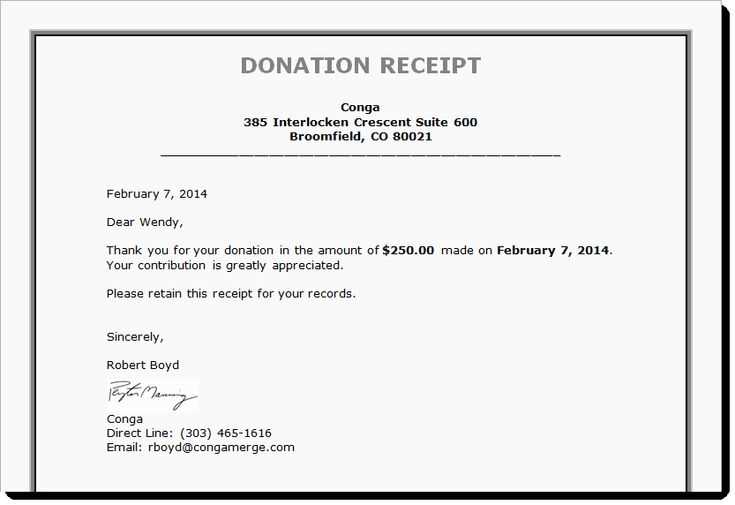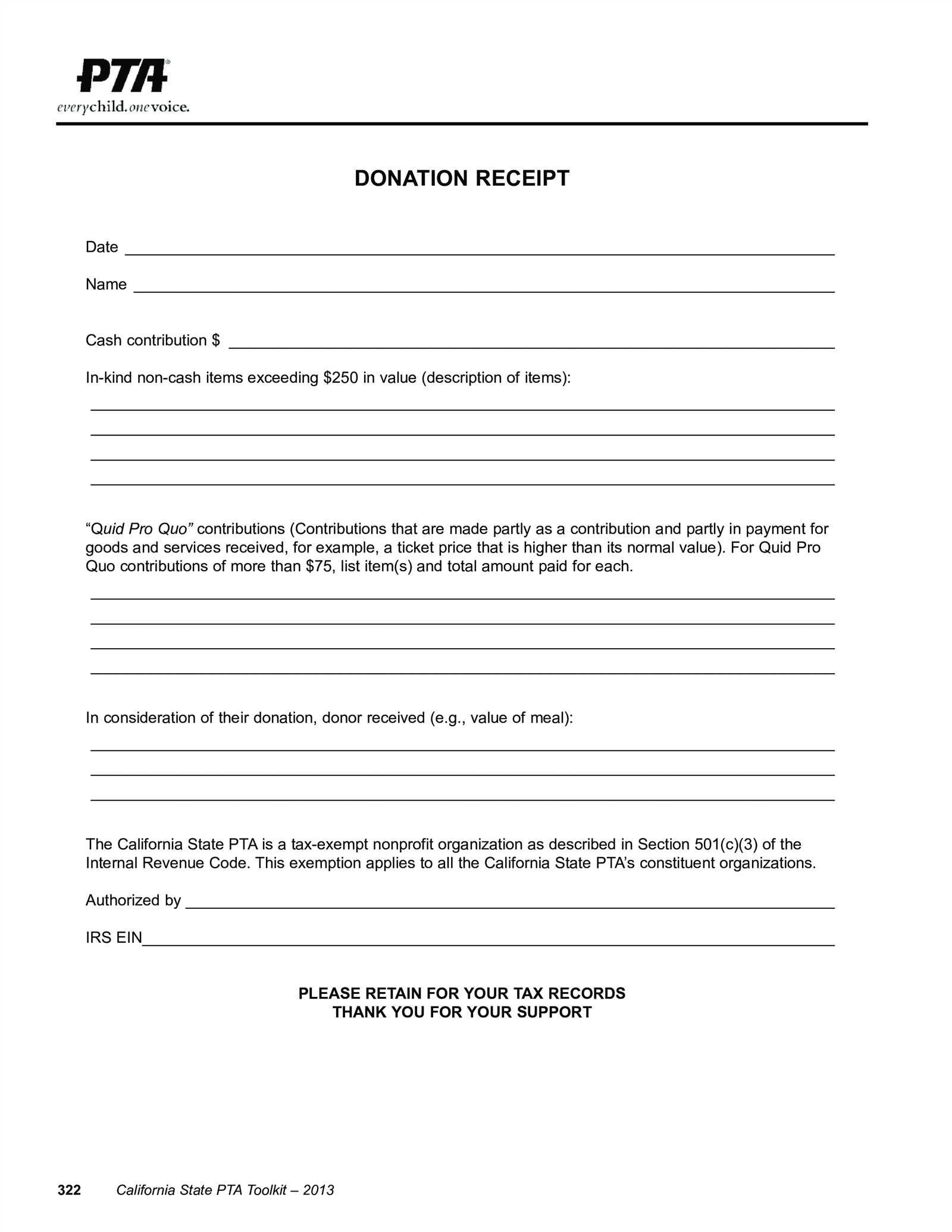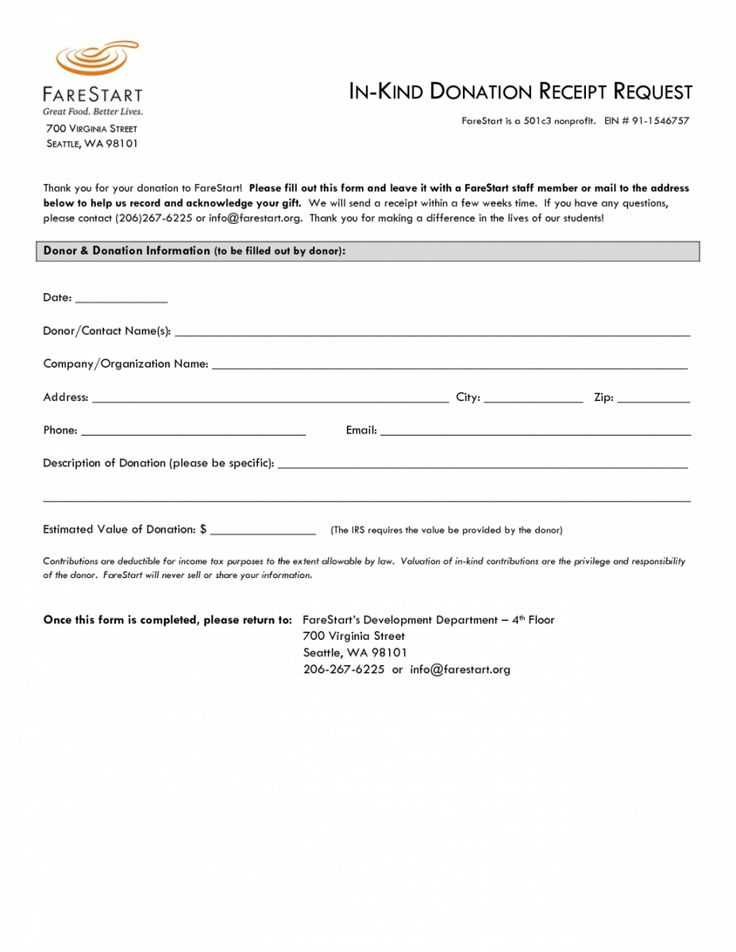
Every nonprofit needs a clear and well-structured donation receipt to ensure proper record-keeping and compliance with tax regulations. A good receipt includes the donor’s name, donation amount, date, and a statement confirming whether any goods or services were provided in exchange.
For U.S.-based organizations, the IRS requires receipts for donations of $250 or more. A simple template should include the nonprofit’s name, EIN, address, and a short message of appreciation. Adding a unique receipt number can also help with tracking.
To make the process easier, consider using a standardized template. Below is a basic format:
Organization Name: [Your Nonprofit Name]
EIN: [Your EIN]
Date: [Donation Date]
Donor Name: [Donor’s Name]
Donation Amount: $[Amount]
Description: [Cash/Check/Online Donation]
Goods or Services Provided: [Yes/No – If Yes, Describe]
A digital or printed version should be sent promptly after receiving the donation. Automating this process through donor management software can save time and reduce errors.
Nonprofit Donation Receipt Template
Provide donors with a clear, itemized receipt that includes your nonprofit’s name, EIN (if applicable), and contact details. Specify the donation amount, date, and payment method. If the contribution was non-monetary, describe the donated items or services without assigning a value–donors determine that for tax purposes.
Include a statement confirming whether the donor received any goods or services in exchange. If not, note that the donation is fully tax-deductible. If the donor received something in return, specify its estimated value and deduct it from the total contribution.
For digital receipts, send an automated email with all required details. For physical receipts, use letterhead for professionalism. Keep copies for record-keeping, as tax authorities may request them.
Required Information for a Valid Donation Receipt
A valid donation receipt must include key details to meet legal requirements and provide clarity for donors. Missing information can lead to issues with tax deductions, so include these elements:
Donor and Organization Details

Include the donor’s full name and, if available, their address. The nonprofit’s legal name, address, and tax identification number (TIN) should also be listed to confirm its tax-exempt status.
Donation Description and Value
For cash donations, specify the amount given. For non-cash contributions, describe the item or service but avoid assigning a value–this is the donor’s responsibility. If any goods or services were provided in return, include a statement explaining what was given and its estimated fair market value. If nothing was received in exchange, state that the donation was fully tax-deductible.
Include the donation date and a unique receipt number for record-keeping. A signature from an authorized representative can add credibility, though it’s not always required.
Formatting and Layout for Clarity

Use clear section headings. Donors should instantly recognize key details like donation amount, date, and organization name. Bold or slightly larger font sizes help these elements stand out.
Align text for readability. Left-align paragraphs and use consistent spacing to avoid clutter. Tables work well for itemized donations, ensuring a structured look.
Keep fonts simple. Stick to one or two professional fonts. Avoid decorative styles that can make numbers or names harder to read.
Highlight important details. Use bold text for amounts and tax information, so donors don’t need to search for them.
Maintain white space. Spacing between sections improves readability. Avoid cramming everything together.
Ensure proper margins. Leave enough space around edges so the receipt looks balanced when printed or viewed digitally.
Include a signature line. If signatures are required, provide enough space to sign comfortably.
A well-structured receipt makes it easy for donors to find what they need at a glance. Clear formatting reduces questions and enhances professionalism.
Legal and Tax Considerations for Donor Compliance

Provide donors with a detailed receipt that meets IRS requirements to ensure tax deductibility. A valid receipt must include:
- The nonprofit’s name and EIN (Employer Identification Number).
- The donation amount or a description of non-cash contributions.
- A statement confirming whether goods or services were provided in exchange.
- If applicable, the fair market value of any benefits received by the donor.
- The date of the donation.
For donations over $250, donors need a written acknowledgment to claim deductions. If they receive benefits in return, only the portion exceeding the fair market value is deductible.
Nonprofits must issue receipts by January 31 of the following year to help donors file tax returns on time. Digital receipts are acceptable if they include all required details.
State laws may impose additional record-keeping rules. Check local regulations to ensure compliance, especially for in-kind donations and restricted gifts.
For recurring donations, provide an annual summary to simplify donor record-keeping. This also strengthens trust and encourages future contributions.

